Directed Research in Fun and Funky Far North Queensland
Directed Research time has arrived here at the SFS Centre for Rainforest Studies in Australia, and while things grow quiet on-site, our staff, faculty and students are all very busy collecting data and performing research across Far North Queensland. In the backcountry of regional parks, isolated rainforest fragments and the main streets of local communities the hard (and fun) work is well underway.
Deep in the backcountry of Danbulla National Park many ecosystems coexist in very close proximity. The underbrush varies in species and density while the trees towering overhead shift rapidly from towering and bare Eucalyptus Grandis with a wide open canopy to densely packed rainforest species, with a dense canopy peppered with vines and epiphytes, all over relatively short distances. It is these ecotones, boundary areas between two distinct biomes, where students are working with Natural Resource Management Professor Catherine Pohlman to understand the nature of wet sclerophyll forests.
By sampling variables such as bark thickness, presence of fire scars, trunk diameter, diversity of species, and soil moisture, the students will be able to compare various biomes in the region and understand these distinct regions of forest better. Students will collect data and draw conclusions that are often of real significance to the larger scientific community. Particular points of ecological uncertainty regard the response of these regions to fire, and the relative stability of wet sclerophyll as an ecological state.
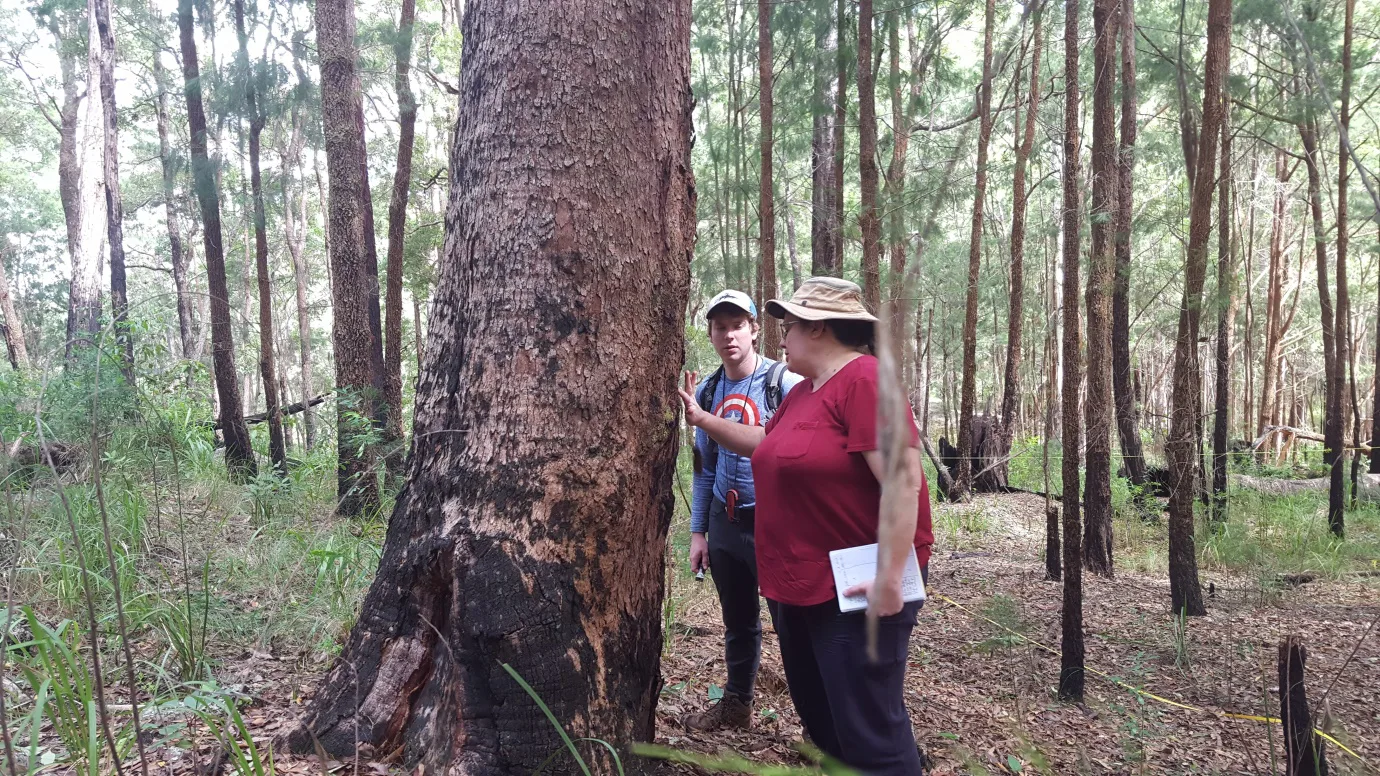
Professor Catherine Pohlman helps a student with a particularly challenging tree identification
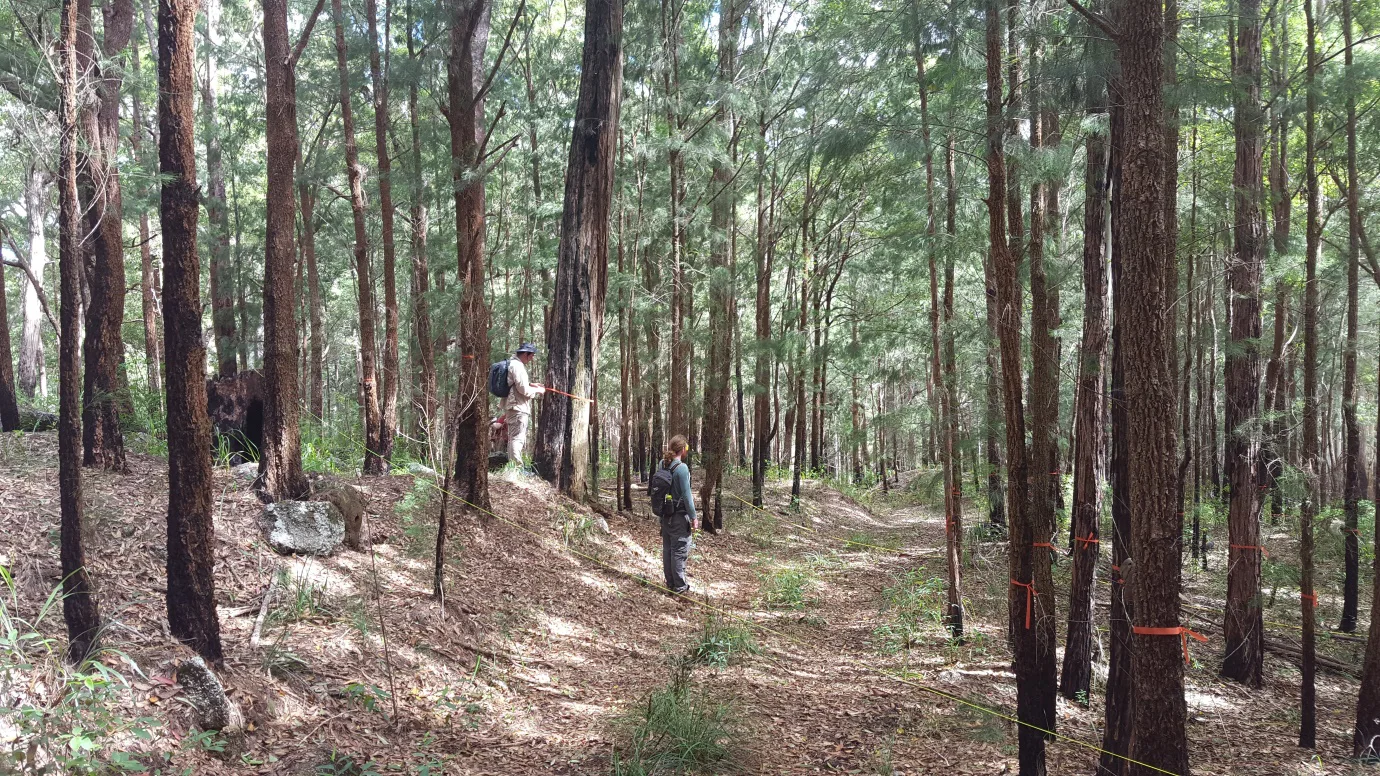
Trees marked. Transect delineated. Now to measure…well…everything!
While much of the fertile Atherton Tablelands plateau used to be covered in wet rainforest, deforestation during the 20th century has left its permanent mark on the surrounding landscape as trees were cleared for timber harvest and to make room for agricultural endeavors. The recognition of this ecological manipulation has led to reforestation efforts being undertaken by local communities to provide sufficient habitat for species at risk such as the Lumholtz’s Tree Kangaroo. To this end, Rainforest Ecology Professor Sigrid Heise-Pavlov and her students are tracking and researching the habits of the tree kangaroo and how it utilizes remnant fragments of rainforest compared to revegetated rainforest sites.
Local volunteers, individuals whose expertise is invaluable and with whom SFS has been working for many years, play a huge part in this portion of our research. Local friend of SFS Simon Burchill graciously guides students through his own property, a revegetation site which has been developing for many years, and his knowledge of the local area and the utilization of specific areas of the site by the tree kangaroo is invaluable. Meanwhile, research into the habits and interactions between mother and joey tree kangaroos is made possible by collaboration with Margit Cianelli, a long-time wildlife rehabilitator and friend of SFS.

Simon Burchill points out a pair of tree kangaroos resting high in the treetops
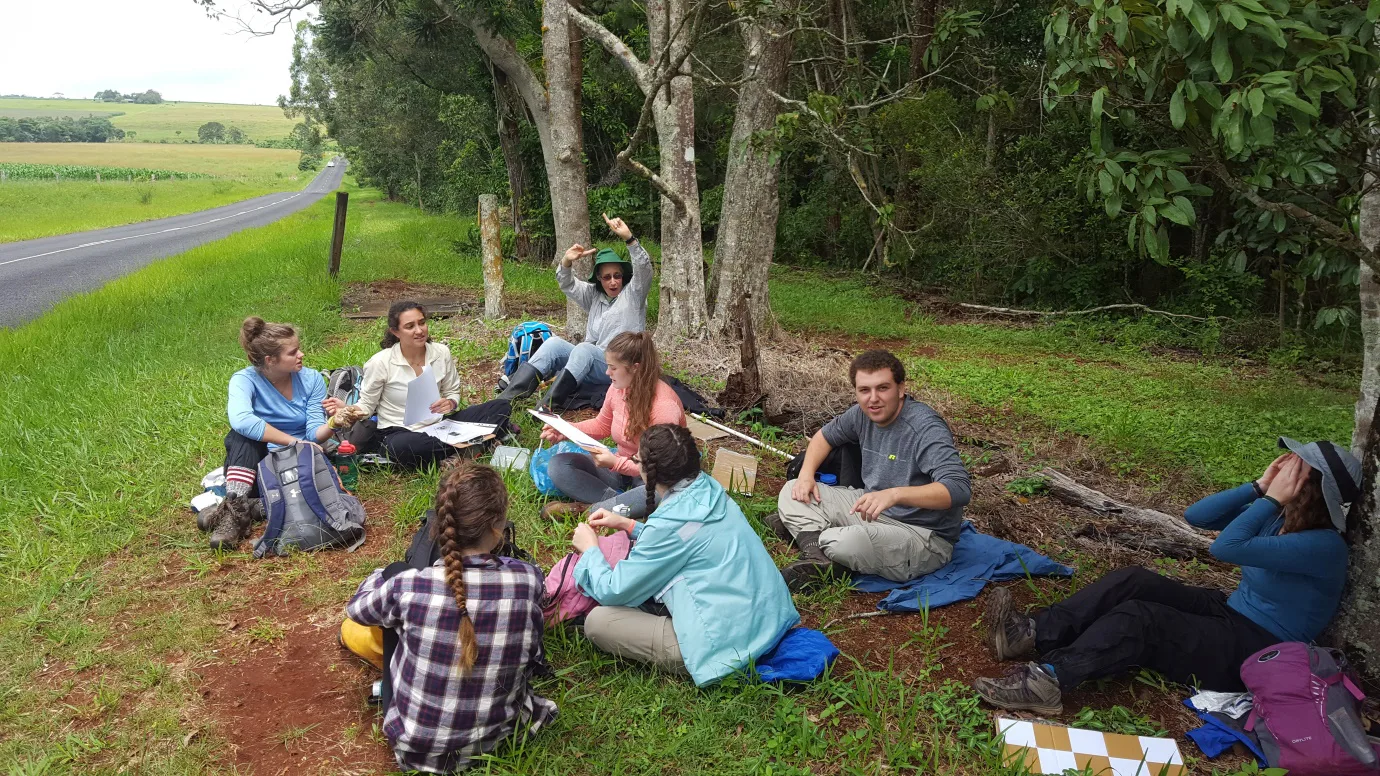
During a break for lunch, Professor Heise-Pavlov gets excited about the students’ data
Meanwhile, all throughout nearby communities Socioeconomics Professor Justus Kithiia and a group of our students have been conducting interviews and surveys with community members to gauge their perspectives on climate change. While scientific information and education regarding our changing global climate is spreading, in the end policies are driven by people and judging the perceptions of the population is critical to understanding the effectiveness of outreach efforts or predicting the future course of environmental policy.
Students have been traveling to communities around Far North Queensland from Innisfail and Mission Beach to Herberton and Karanda to survey individuals’ knowledge and opinions on climate change. They have also been getting unique perspectives on the climate at the aboriginal Mandingalbay Yidinji community and have had the opportunity to craft their research methods and questions at internationally lauded and environmentally minded James Cook University in Cairns. While the data has yet to be analyzed, it seems that despite so much local industry relying on regional natural resources, there have been a few interesting and surprising trends noted, particularly in the relationships between age, education, and belief in both climate change and its anthropogenic origins.
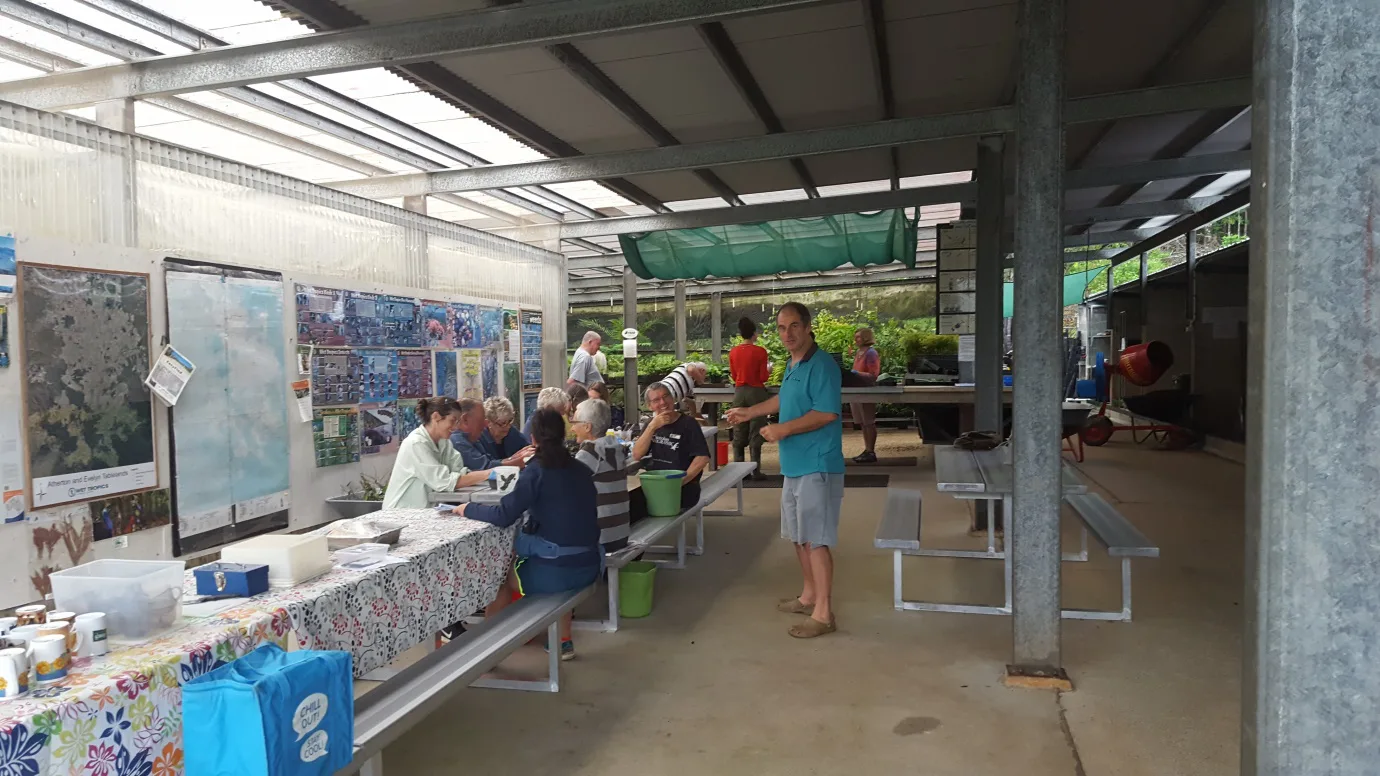
Several students had the opportunity to interview volunteers at TREAT, a local rainforest tree-planting and reforestation program
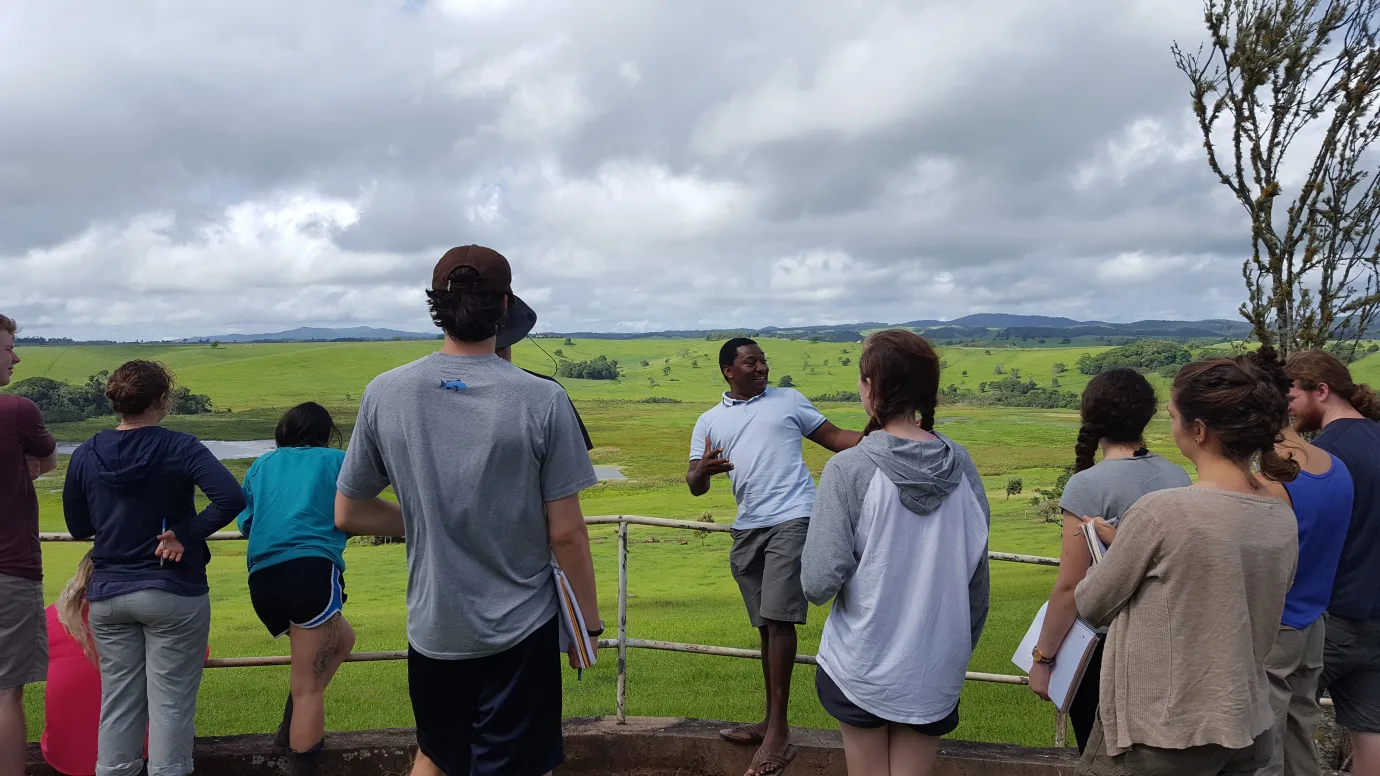
Professor Justus Kithiia lectures students on the subject of adaptive capacity, the underlying ability of a community to adapt to environmental changes
It will be fascinating to see how the research coalesces into individual papers, and to read the conclusions of our researchers here at the Centre for Rainforest Studies. For now we must not get ahead of ourselves, as there is data yet to collect!
Related Posts


Alumni Reflections: Stories of the Return to Kenya
